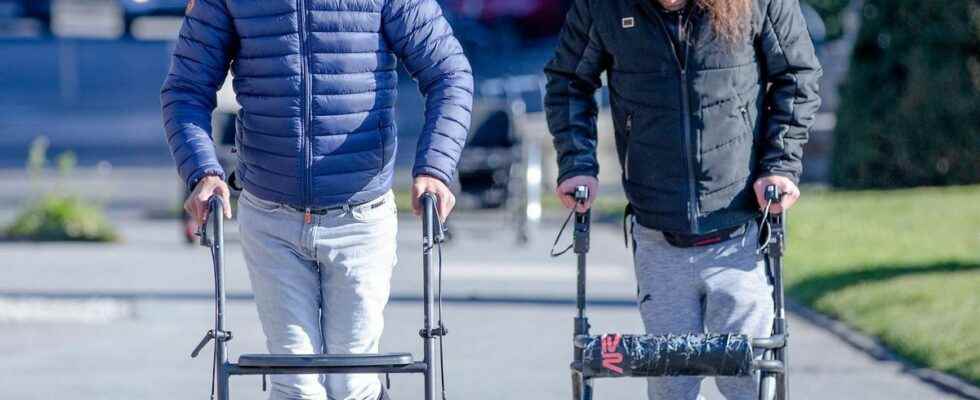Published on
Updated
Reading 2 mins.
Swiss researchers Jocelyne Bloch and Grégoire Courtine are continuing their momentum: after having achieved the feat of making three paraplegic patients walk again in 2018, they are announcing this time that they have discovered “the walking neuron”.
The image had gone around the world in 2018 and the work had been praised by the entire scientific and medical community. At the time, the duo Jocelyne Bloch, from the Vaud University Hospital Center (CHUV) and Grégoire Courtine, from the Federal Polytechnic School of Lausanne (EPFL) in Switzerland, announced that they had enabled three paraplegics to walk again, thanks to implanting an electrode. A kind of wireless implant that allows them to move, even without electrical stimulation.
Regrowth and reorganization of nerve fibers
The two scientists have since continued to work on this device. In this new study, published in the prestigious journal Nature, they report that their therapy has been effective for 9 patients in total. These latter were able towalk again, stand up, re-muscle“, thanks to the stimulations induced by the implants.
And, at the end of the rehabilitation process, “the improvement in motor skills persists even in the absence of electrical stimulation“, EPFL said in a press release on Wednesday. These results therefore suggest that this neurological recovery is linked to a regrowth and reorganization of the nerve fibers involved in walking.
Identification of the “walking neuron”
To better understand the mechanism, the researchers studied it in animals. This is how, on a model based on the rodent, they were able to identify a group of particular neurons, baptized Vsx2.
To do this, they studied different types of mice: healthy animals, others that were paralyzed or that had received stimulation using electrodes. Using an advanced technique based on genetic sequencing, the spinal cord was analyzed in order to target active neurons.
Vsx2 Neurons
Not particularly solicited in the healthy individual, these Vsx2 neurons are on the other hand essential for recovery after a lesion of the spinal cord. Indeed, the inactivation of these neurons immediately stopped walking in injured mice, while it had no effect on healthy mice. For the researchers, this demonstrates that these Vsx2 neurons are both necessary and sufficient for electrostimulation to be effective.
A “molecular atlas of the spinal cord”
Researchers had so far proven that their patients could walk again while being electrically stimulated. They now demonstrate that this treatment allows neurological recovery and the benefits are maintained over the longer term even without stimulation. “For the first time, we have been able to establish a molecular atlas of the spinal cord with such precision that it allows us to observe, neuron by neuron, the evolution of the healing process.“says Grégoire Courtine, professor of neurosciences at EPFL.
Market the device one day
The work of these two Swiss researchers raises hope for new treatments for people with spinal cord injuries. For the moment, the duo wants to carry out studies on a larger scale, with the aim of demonstrating that it is possible to generalize this technology in order to make it affordable. And that one day it will be accessible to all those who need it.
